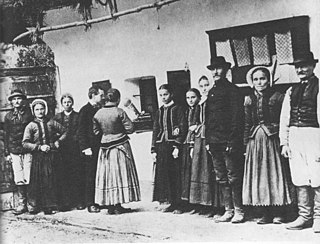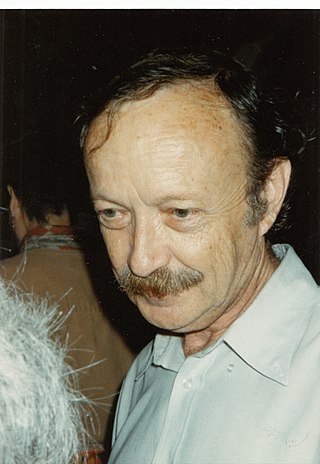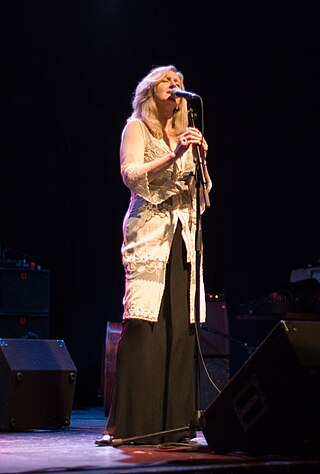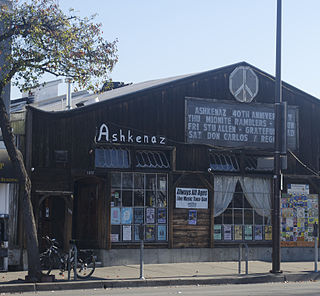History
International folk dance developed in the immigrant communities of the United States of America during the first half of the 20th century. Traditional dances such as branles, polkas, quadrilles and others have been done internationally for hundreds of years; however, the creation of international folk dance as such is often attributed to Vytautas Beliajus, a Lithuanian-American who studied, taught, and performed dances from various ethnic traditions in the 1930s.
Also, in the mid 1930s, Scandinavian dancing began to take hold in non-Scandinavian communities. Clubs began to form around this style. A pioneer of this era was the ethnic Chinese illustrator Song Chang, who, struck by the lack of bigotry among the Scandinavian dancers, encouraged others to join, advised clubs, and had a club named in his honor, the Chang's International Folk Dancers, still located in San Francisco. [1] Other prominent teachers and promoters of international folk dance in its first few decades included Michael Herman and Mary Ann Herman, Jane Farwell, and Dick Crum. [2]
Those groups known as international folk dance clubs began to take hold in the 1930s and 1940s, with more diverse selections of music than just Scandinavian, with Balkan dances, Western European dances, and dances from the Philippines. The Folk Dance Federation of California was founded in 1942. By 1946, there were approximately 100 clubs in California alone. In 1948, the College of the Pacific Folk Dance Camp, now known as the Stockton Folk Dance Camp, was founded. [3] [4] Other camps were founded later, and all draw on teaching talent both American and foreign. At the inaugural Statewide Festival held in Ojai, California, occurring on May 11, 1946, there were over 500 dancers and 3000 spectators.
In 1964, a new idea took hold in a pair of dancers in Los Angeles. Rudy Dannes and Athan Karras opened a coffeehouse that also functioned as a place for international folk dancers to dance at night without having to worry about renting a space, called The Intersection. [5] The idea took off, with new people starting their own dance coffeehouses, such as Cafe Danssa in L.A., founded by Dani Dassa, [6] and the famous Ashkenaz in Berkeley, founded by David Nadel in 1973. [7]
In 1975, the Folk Arts Center of New England was founded by Conny Taylor and Marianne Taylor to preserve and encourage international folk dancing and other folk arts. [8]
In the 1980s, costs escalated, and the number of active clubs shrank somewhat. Many events such as camps or festivals had to be put on hold until the organizers could gather the money and the people. In 1984, The Intersection shut its doors due to lowering turnout. [9] However, on the East Coast, the NFO, or the National Folk Organization, was founded in Chicago in 1986 by Vytautas Beliajus, Mary Bee Jensen, George Frandsen, and L. DeWayne Young, an organization dedicated to the preservation of folk arts. [10]
In the 1990s, interest in dancing increased again, and dances from the Chinese, Japanese and Hispanic groups were added to the repertoires over the '80s and '90s as neighborhoods diversified. Ballroom dance, swing dance, tango and salsa dance became more popular, with some dancers from these genres also entering the international folk dance scene as a whole. [4]
International folk dance has grown into a large community of dancers, performing groups and recreational folk dance clubs throughout the United States, Europe, Canada, Japan, Australia and other countries. Dance festivals and conventions are held year-round. Dance "camps" or workshops invite teachers to instruct dancers in dances from many traditions. These groups usually focus on European dances, but the international folk dance repertoire may include dances from every part of the world: Europe, Africa, North and South America, the Middle East, the Far East, Australia and the South Pacific.








